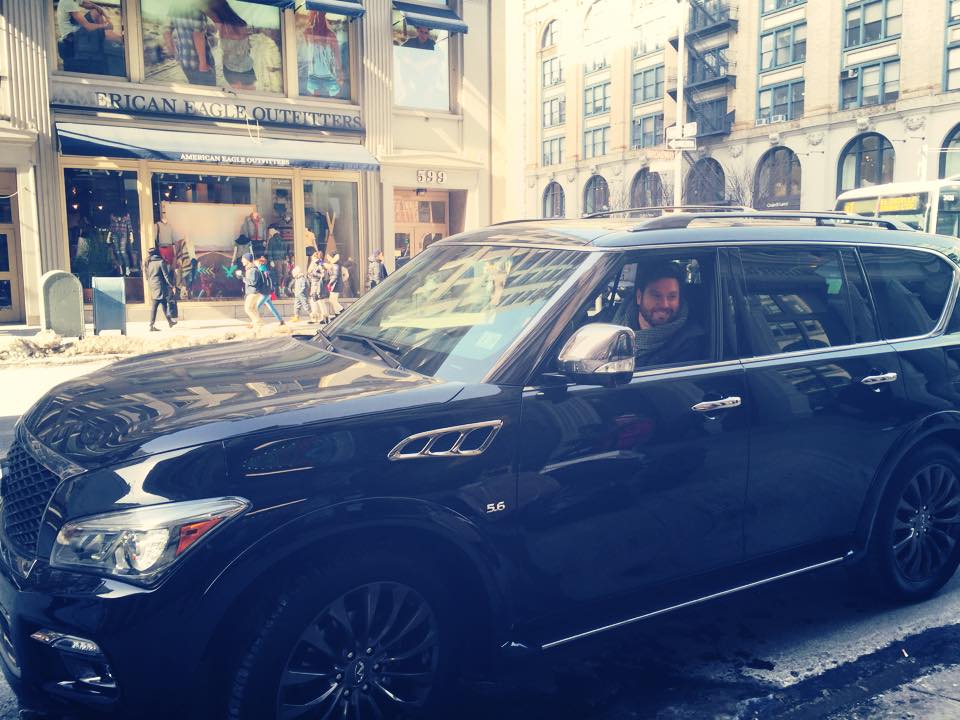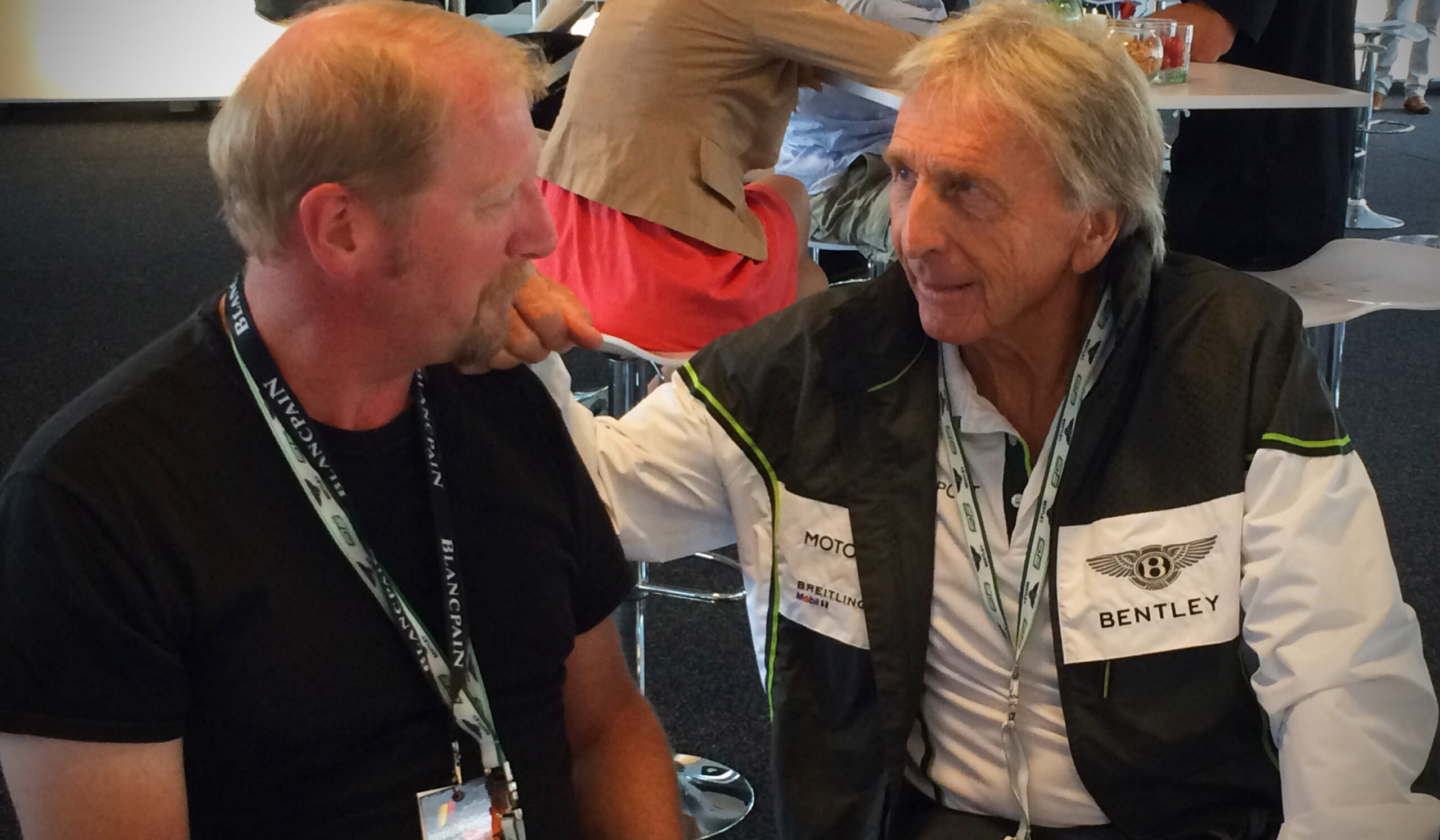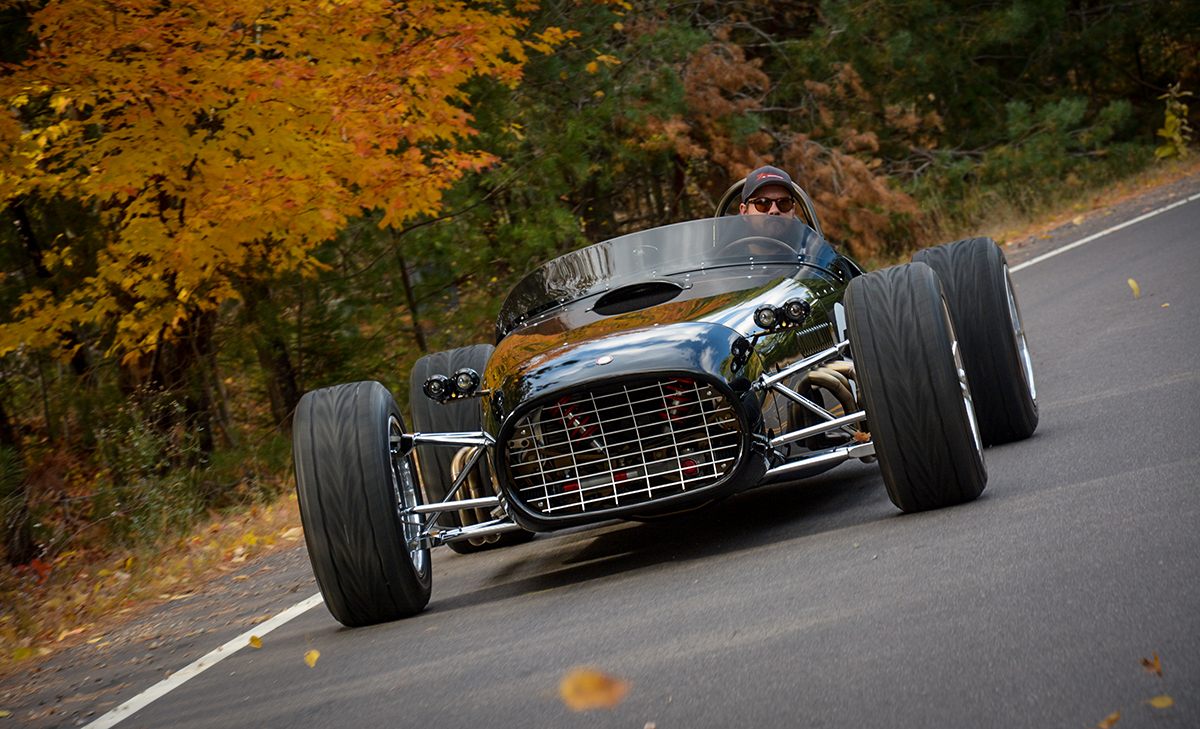Behind The Wheel With Scott Colosimo
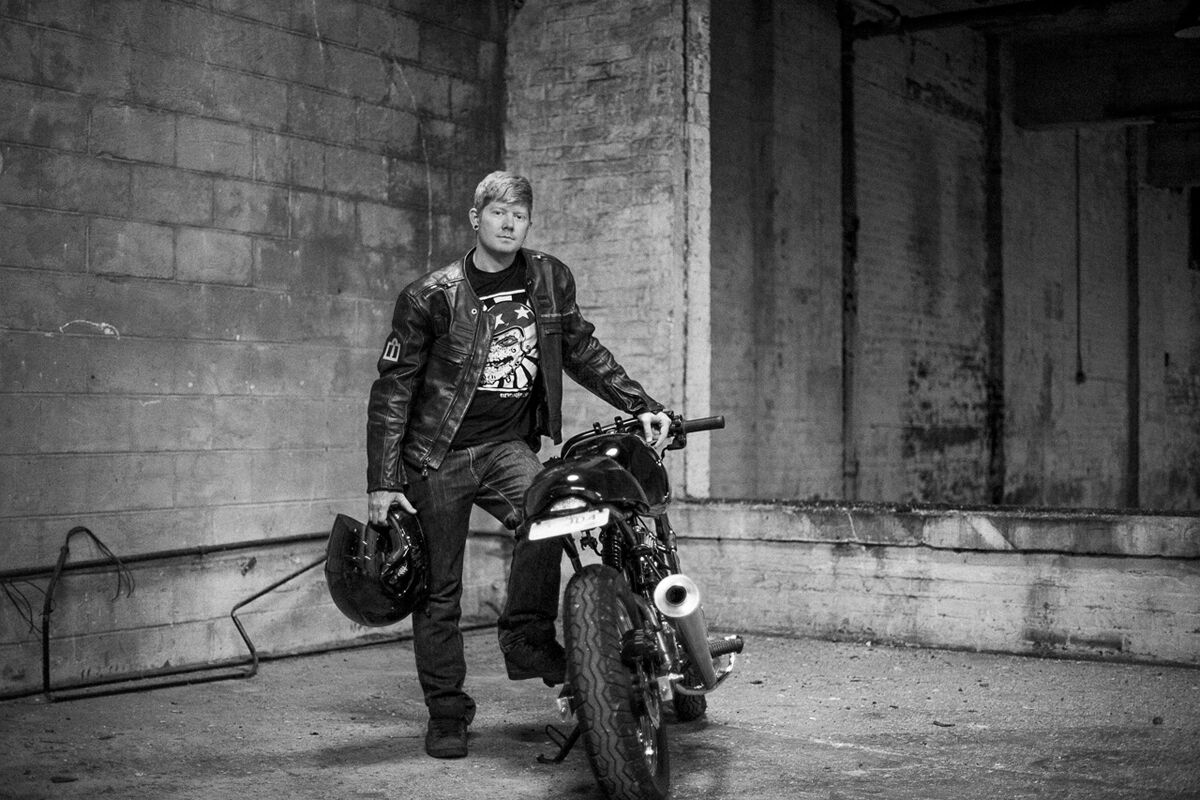
Born and raised in a car and motorcycle family, Scott Colosimo has been around bikes for as long as he can remember. To say it’s become a passion would be an understatement. Following a few stints in industrial design positions with Fortune 40 companies, his passion led him and his partners to create Cleveland CycleWerks back in 2009.
With a lineup of small displacement bikes that are big on style, Cleveland CycleWerks has carved out its place in the motorcycle industry thanks to the vision, ingenuity, and hard work of Colosimo and his team. We sat down with Colosimo to get a better understanding of what make him, and his company tick.
What is your first recollection of being around motorcycles or aware of motorcycles?
My whole family is a little bit car crazy, bike crazy. Probably the first recollection I ever had of a motorcycle is my uncle rolling into a family event on a teal Harley Davidson. I can still picture him rolling in and parking the thing on the sidewalk right in front of the house.
Do you remember the first bike you owned?
First and foremost, I’m a designer. So, to me, design is a huge part of everything I do. The first bike I ever had was a Ducati Monster. I had a very specific reason for that, I just liked everything about it. A bike to me is not just about the look; it’s about the sound, the feel, the rumble, how it delivers the power. What is that sound as you’re on the throttle, when you let off? The linear power delivery. That Ducati chassis was just so predictable, I felt like I could literally do anything I wanted to on that bike. I was obsessed with the Ducati Monster since it came out, I think I was like 15 or 16 when that bike came out. Of course, that had to be my first bike. Ducati was it.
You started building custom cars and bikes at age 15. How did that get started, what was it that got you into building?
I was riding a 2-wheeler at age 2, a pedal bike. It’s just one of those things (passion), it truly makes no sense, bikes and cars make no sense. I’m convinced that it’s some sort of primal thing, you either have it or you don’t. I was addicted to 2 wheels when I was 2 years old and it’s just gotten worse since then. Since my dad and uncle had bikes and crashed, and were fucking were nuts, my uncle had like 3 crashes; one at 180 miles an hour, I was forbidden to have any powered motorcycle when I was a kid. It got to the point my mother literally threatened complete separation from the family if I was to get a motorcycle of any kind before I was financially independent from them. Because of that, I took every opportunity to ride my friends’ dirt bike or moped or whatever. Those short times, a weekend here, a weekend there, grew the passion even crazier. Every chance I got to put a motor on something and try to make it go faster I took. Going from pedal power to some sort of other power had always been an obsession.
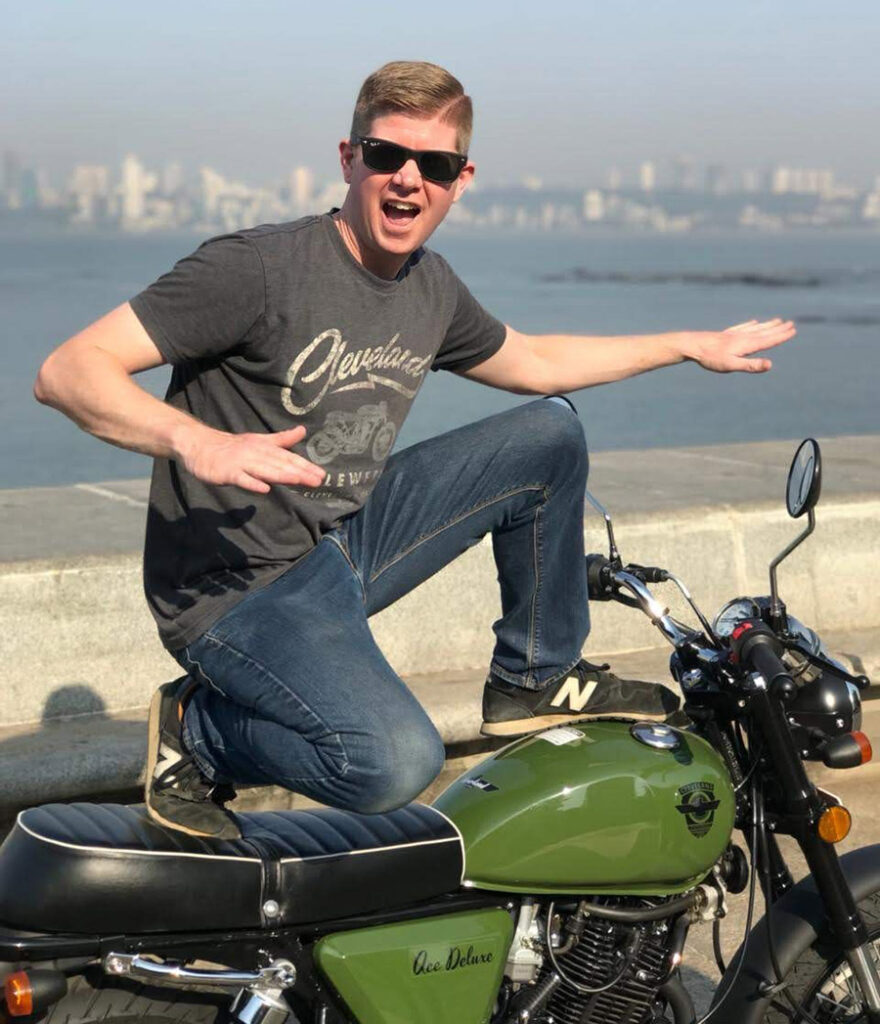
How did you and your partners decide it was time to create CCW?
There are a couple of things. I was working for automotive OEMs, in Detroit and I moved to Europe for a short time; the glacial movement of that industry drove me absolutely fucking nuts. You’ve got the smartest people in the world pushing toward a common goal to make the coolest thing ever and then it would always become uncool because of design by committee or that the decision had to be run past 12 people. The coolness in the production never matched the concepts, it was always watered down, like 1/10th what it should’ve been. Again, that drove me fucking nuts. That’s why ugly cars and bikes happen, you get too many people trying to make decisions. That’s what made me quit the car industry. I was doing consumer products for a while and I really enjoyed that. That was something I was going to stay doing and then, by chance, I just started building custom bikes and what was really the turning point was when I tried to build a traditional American bobber and I had $21,000 worth of parts before I could even assemble the bike. I looked at that and said; this is absolutely absurd. So, basically started putting the bike together and I couldn’t afford a motor so just bought a cheap Chinese motor off eBay and put it in it so I could ride it around. This little engine actually moved the bike and it was fun to ride. I started looking at this as a business and decided I could build like 50 custom bikes with small displacement motors. Then, all of a sudden, we got an order for a couple hundred bikes and I couldn’t fulfill it, so we moved in a different direction. It was just kind of organic. I just kind of followed a passion.
How many bikes per year does CCW produce? What are the plans for the future?
We’ve reached that precipice in the company’s history. We’ve been bootstrapped and organically growing for 10 years and we’re competing against companies that are a minimum $1B companies and here we are tooling around for like a couple million dollars a year. So, we’ve sold anywhere from a couple hundred to over 10,000 units a year. However, for the first time in the company’s history we’re bringing in capital, investors. We’re entering a new phase of the company’s history. We have a good solid business plan and good, solid products to build on and now the company deserves to spread its wings, and we’ve allowed a few outsiders in on the plan that are starting to see our vision. This goes outside of motorcycles. We have a complete mobility vision of where we want that to go. We feel like right now there’s an opportunity to create a vision of the future we want and not one that is dictated to us by Honda, Kawasaki, Harley Davidson, etc. We have an opportunity to bring in some capital and move the company beyond a small workshop brand.
Where is your manufacturing being done now?
We are truly a global manufacturer. We have a lot of parts that are built in the US, but we also have parts built in China, India, Taiwan, some in the EU and Korea. We have some manufacturing in Southeast Asia. For example, we don’t plan on becoming fork manufacturers. There are other people better at that than we are, so you go to where that manufacturer has that expertise. For small displacement bikes that is not in the U.S. We have never throughout our history billed ourselves as a U.S. manufacturer. We source from everywhere and we don’t try to hide the fact that we work with China or Korea or Taiwan. We embrace that because that’s the best place we can be working right now.
It’s been 10 years since you started CCW. Has it been everything you hoped it would be?
That’s a trick question. The life of an entrepreneur, the life of a businessman, I like to say we die a thousand deaths every day. If you ask me literally an hour-and-a-half from now I’d probably have a completely different answer. The trickiest part is keeping optimistic throughout all of it. So, I would say, yes, it’s exceeded whatever I expected it to be but at the same time there’s the emotional aspect and the business aspect. The innovation is what drives me. It drives me more than the capital. I just like making new things. I like creating and making relevant products that actually improve people’s lives. In that aspect I’m really satisfied. Then I look at the company’s EBITA and growth and I’m never satisfied with that. That’s like the Yin and Yang.
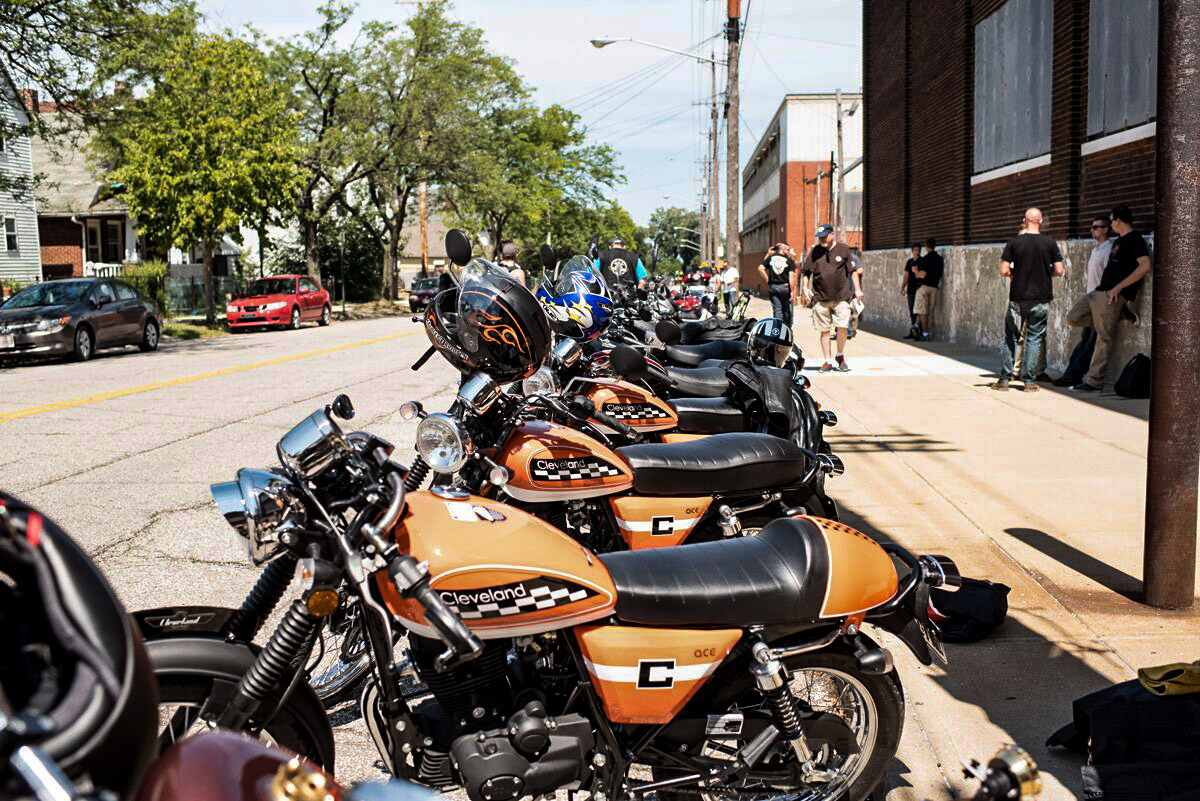
Where do you see the growth, if any, of the motorcycle industry in the future?
My business is very much a reflection of me. We pursue things that I have interest in. That’s why we pursued small displacement motorcycles. I’ve been traveling the world and some of my favorite bikes are in Indonesia, they’re Japanese domestic market products, things you don’t see here. Being a minimalist at heart, I really believe that less is more when it comes to motorcycles. That’s why we’re doing what we’re doing right now. And we were doing it when it made no sense back when the big V-twins were sort of all the rage.
The future is undoubtedly electric, if anyone in the industry is telling you it’s not, they’re insane. Where the automotive industry is going will ultimately be what drives the motorcycle industry. The switch is happening, we don’t know when it’s going to happen but pulling back the curtain on the industry a little bit there won’t be any new gas-powered vehicles being built in large quantities by 2030.
We have a product road map, a very surgical strategic plan to transition from gas to electric. We’re thinking big, I mean, really big. To make this electric future possible, there are some very specific things outside just the bike itself that have to happen. With the raising of new capital and bringing on new investors, we have a chance to affect change, shape the future and how things get done.
If I opened your personal garage door today, how many bikes would be in there? What else would be there? What is your everyday bike?
I have 4 kids, so my garage at home is mostly about 8 different kid’s bicycles, from wooden bikes we made to bikes we took the pedals off for my kids to use as striders to BMX bikes. A full suspension mountain bike. We have a lot of vehicles in there. We definitely have a cozy coupe, that’s important for the kids. I have a couple Cleveland’s; I have a custom Cleveland Heist, 2 custom Cleveland Aces, a Cleveland Misfit, and then I have a Ducati 749S, which is my track bike. I’m sure there are a couple other bikes in there too.
What does your ideal ride or destination look like?
I actually prefer riding overseas over the US. When you ride overseas it’s just so dynamic. I like the sense of discovery, the smells. Everything about riding a motorcycle is about discovery. That’s why I really like riding in Indonesia, the Philippines or Viet Nam. It’s so many people and so dynamic and nuts. There’s so much to explore.
What do you like to do away from work/motorcycles?
I don’t know. I haven’t known that life for over 20 years. Actually, I don’t think I’ve ever known that life.
We completely understand. Thanks for taking the time to talk to us and keep on making great bikes.

